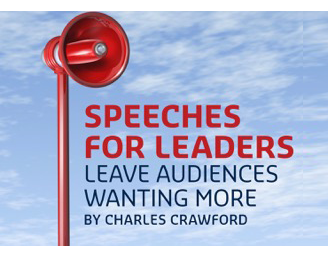The TEDxKrakow event yesterday was fascinating as an opportunity to watch a series of short live presentations before an audience of some 600 people and spot which public speaking techniques work – and which don’t.
My conclusions on the Art of Oratory.
First, if you want to create a really eccentric impression, make a point of not looking at the audience once in your presentation. This is basic, folks. If you are making a speech you must engage with the people there to listen to you. That means all of them, not just your own shoes and the people in the front row.
Message to speakers: Eye contact with as many people as possible is vital. Whether you like it or not, you are expected to put on a bit of a show, especially as the audience gets larger and further away from you. Addressing a seminar is one thing – motivating 600 people is quite another. If you feel too shy or nervous to engage with a significant audience, hire a professional public speaking coach to help you get this right. Otherwise even the best material evaporates.
Second, at the recent Speechwriters Guild conference in Bournemouth Max Atkinson gave a perceptive talk on the use of ‘props’ to help make a speaking impact. This when done well is really effective.
Several speakers yesterday had brought some objects to illustrate their points (eg a crusty real Polish loaf and a sad limp supermarket pack of sliced ‘bread’; a two-slot piggy-bank which rocks to and fro according to which side has more coins – designed to encourage savings competition). But the items were not really used in a way which made the audience sit up in surprise.
Message to speakers: Be bold, Use props sparingly but with energy and dramatic effect to reinforce your core message.
Third. Some of the speakers had not quite worked out how to pace themselves in the time available, ruthlessly enforced by the TEDx format. You speak at about 100/110 words per minute. So 18 minutes is the equivalent of a 2000-word essay. Quite a lot of space to convey a lot of material. But you don’t need to fill that space with talking. Pictures and pauses are fine for helping people absorb what you are saying. That said, you need to know where you are in your presentation and be able to speed up or slow down as the time ticks away.
Message to speakers: less is usually more when it comes to public speaking.
Fourth. Tell a Story. This is another basic one. The presentations at TEDxKrakow which made the most impact tended to be those which had a clear or strong story-line. It need not be a real-life story, although that always makes an audience perk up. It can be much more abstract:
"I am a diplomat. Let me tell you precisely when diplomacy was invented. It all started with Aesop being thrown off a cliff a few hundred years BC…"
Message to speakers: stories bring a presentation to life. They help you add intellectual and emotional highs and lows, varying the intensity of your engagement with the audience and keeping their attention. Use them.
Next, have Structure. Without structure a speech is next to impossible to follow. The structure should be very simple:
- General to particular to general to Conclusion
- Particular to general to particular to Conclusion
- Good news to bad news to moral to Conclusion
Structure is closely related to story-telling. A story helps with structure:
- story/wider lesson learned/Conclusion
Message to speakers: if your speech does not have a structure, don’t expect the audience to be able to follow you, even in a speech only a few minutes long. You may catch their attention with some striking facts or phrases, but these will not lodge in the audience’s mind without the context given by surrounding structure.
Finally, your Message. Make sure that you keep your message simple and accessible. Some speakers yesterday might have done a bit more to bring out their core point(s) so that the audience had no doubt what was at stake and what should be done next.
Message to speakers: if you (a) don’t know what your own message is and (b) don’t make it clear, the audience won’t know what you really want to say. Your message needs to be summarised in fewer than 10 words. Imagine a newspaper heqadline reporting your speech – what would you want it to say?
In short?
If you are asked to make a speech of any length, from ‘just a few words to a major set-piece address of 30 minutes or more, think SSM:
- Story
- Structure
- Message
Get that right – and look at the audience – and you’re well done the road to wild popular acclaim.










